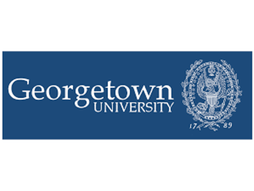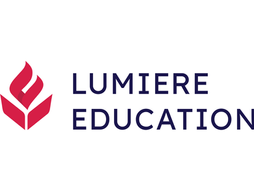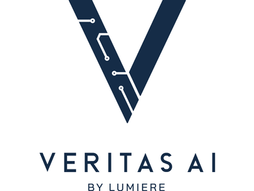NASA's Human Exploration Rover Challenge (HERC) - 10 Tips to Help You Win
The world of STEM is evolving rapidly, and for any high schooler serious about a future in the sciences, in-school education isn’t quite enough to help you seize the best opportunities. STEM competitions and challenges, hosted by various organizations the world over, are powerful opportunities that allow you to showcase and enhance your skills and knowledge while competing with equally determined peers. Taking on these challenges not only boosts your learning but also embellishes your college application profile, making you stand out. In today’s blog post, we will be diving into one of the most prestigious engineering and design challenges open to high schoolers - NASA’s Human Exploration Rover Challenge (HERC). Note that the following information is based on the most recent program, with dates subject to change but generally similar from year to year.
What is NASA's Human Exploration Rover Challenge?
The Human Exploration Rover Challenge (HERC) is one of NASA’s many programs to build STEM competencies in young people. Celebrating its 30th competition year in 2024, HERC challenges participants to design, build, and test a human-powered rover capable of traversing challenging terrains that simulate extraterrestrial environments. Teams also create a specialty tool to complete simulated mission tasks, earning points through various stages such as design presentations, documentation submission, and successful completion of course obstacles and mission tasks during the in-person event.
HERC is held under NASA’s Artemis mission, which aims to land the first woman and first person of color on the moon’s south pole and to develop a sustained human presence on the moon. Taking inspiration from the Apollo 15 landing and usage of the Lunar Rover Vehicle (LRV), competing teams will have to traverse rough terrains over the course of two excursions on a roving vehicle while carefully performing tasks related to the mission narrative, all the while limited by the virtual eight-minute oxygen supply forcing them to improvise and prioritize.
Is the HERC prestigious?
The HERC is one of the most prestigious engineering design challenges in the world. The primary driver of this prestige is the fact that it’s hosted by NASA for their next significant space exploration mission. Teams from across the globe apply, with the previous competition boasting 72 teams from 14 nations. Most importantly, while any high school is free to apply, the intensity and rigor of the competition is significant - your rover will be made to undergo as many of the same trials and travails that one could expect on the moon or Mars as possible. This combination of design and performance restrictions, the backing of NASA, and the global competition means that qualifying for, competing in, and especially winning the HERC is one of the most powerful testaments to your STEM capabilities that you can have.
What are the eligibility criteria?
The eligibility criteria for the HERC are simple and straightforward: participants need to be in grades 9-12 in any high school (a school can nominate only one single team). There is no registration fee, no application fee, and no geographical restriction, although the final event is an in-person obstacle course for the rover so you will need to be able to travel to the US Space & Rocket Center at Huntsville, Alabama. But beyond that, NASA invites as many applications from as many countries as possible.
How does the application process work?
Once you and your team are registered, you will need to submit a written proposal that acts as the first qualifier. For last year, the submission date for this was September 21. Post this submission, top-scoring teams are invited to compete in the main event, with the shortlist being released on October 12.
How is the challenge structured?
The HERC has multiple steps leading up to the main event. Using the example of the previous event, it is organized as follows:
August 10 - The HERC Handbook is released. This handbook contains all rules, guidelines and instructions for the challenge and we highly recommend you go through it thoroughly!
August 24 - Proposal expectations webinar.
September 21 - Proposals due.
October 12 - Team selections are announced and registrations for selected teams open.
October 19 - Registration for selected teams closes.
November 16 - Design Review (DR) Report and slide presentation due.
Each team is required to submit a design review report and virtually present it to the judges.
The DR is worth 20% of the score, half of which (10%) rides on the presentation itself.
Your DR is meant to demonstrate that your design is mature and appropriate enough to support fabrication, assembly, integration, and testing. It will need to justify the selection, design, and rationale of the vehicle design, the design of the task tool, and a thorough (if preliminary) safety analysis. You will also need to provide simulation data showcasing the sufficiency of your vehicle for the challenge tasks, as well as timelines and budgets.
Nov. 27 – Dec. 15 - DR presentations, design completed, and construction in progress.
March 7 - Operational Readiness Review (ORR) Report and slide presentation due, photos of the completed rover for verification due.
The ORR examines construction, tests, demonstrations, and analysis to determine the overall rover and task tool readiness for a safe and successful excursion.
The ORR is worth 20% of the score, half of which (10%) rides on the presentation itself.
Your ORR will need to fully detail your rover and its multi-task tool with dimensions, material reports, and schematics. It will also need to include your detailed strategy for the rover excursions in the main event, how it will overcome obstacles, which optional tasks it will attempt, and how. There also needs to be a mandatory section on safety, hazards, risks, and mitigation plans.
March 11 – 29 - ORR Presentations, Rover/components completed and testing in progress.
March 21 - STEM engagement report(s) due.
One important part of the HERC is the STEM engagement activity. Each team will need to engage a minimum of 250 participants in a direct, hands-on event aimed at improving their knowledge of and exposure to the STEM fields. This can include instructor-led facilitation or virtual conferences. The content of the STEM engagement activity(ies) should be related to the HERC, e.g. mechanical design, vehicle infrastructure, physics, engineering design process, etc.
The STEM engagement report will count for 10% of the score.
April 18 - Competition Day 1. This will be mostly check-ins, walkthroughs, and event briefings.
April 19 - Competition Day 2
This is where you and your team will attempt the first excursion with your rover on the obstacle course. The excursion will last 8 minutes to simulate a limited oxygen supply, and the two pilots of the rover will need to navigate the full course, attempting to complete as many of the 10 distinct obstacles as they can. There are also 5 optional tasks to be completed for additional points.
April 20 - Competition Day 3
On day 3, you and your team will have the option to run the course for the 2nd time. The best of both excursions will be counted for the final scoring, and it is not mandatory to run the second excursion. After the excursions are complete, the scores will be tallied and the day will end with the awards ceremony!
10 Tips to Help You Win
If you’re ready to contribute to the next stage of space exploration, then here are some tips to help you win:
Do your homework: We can’t emphasize this enough: memorize the Handbook (yes we did link it again)! The HERC is an intense, rigorous, and extremely specific challenge with clear-cut rules and requirements for every single stage, and it is important that you adhere to the instructions.
Build a complementary team: Designing the rover and the multi-task tool is a complex task with (literally) many moving parts. Your team will need to be proficient in mechanics, design engineering, electronics, tool design, material science, safety and more. Having a strong team with members specializing in various fields will help you efficiently focus on each aspect and bring it all together to build the best rover possible.
Plan for the terrain: The course map and list of obstacles and tasks are publicly available right from the get-go. Make sure you factor them into your rover’s and tool’s design so that you’re able to attempt as many of them as possible, maximizing your possible score.
Efficiency is king: The rules of the HERC provide several constraints on the rover design. Importantly, you cannot use an energy storage device, the rover must be human-powered. There is also a volume limit to the rover size. All of this implies that every bit of your design needs to be optimized, from the weight to the materials you use to the drivetrain to the tool structure. Remember that the obstacle course and task list is designed to comprehensively evaluate the rover’s performance in a variety of scenarios, and the more versatile it is, the more likely you will win.
Work with your advisor: Each team must have at least one team advisor. Your advisor is ideally a person experienced with at least a few of the aspects that go into designing the rover and should be able to guide you on how to best approach the rover design. You and your team should work in close coordination with your advisor and have them help you devise a strategy, secure materials and workshop spaces, and some way to test or simulate your design attempts.
Secure a source of funding: It should come as no surprise that designing a functional rover is unlikely to be an inexpensive endeavor. With your advisor’s assistance, try to secure some funding for your attempt. The first and likely easiest source may be your school, but if that doesn’t work out or feels limiting, then you can and should try to reach out to other organizations or individuals who are committed to seeing students succeed in STEM and space exploration.
Design for safety AND comfort: While there is a strong focus on safety in the HERC, you also need to keep one important factor in mind - the rover is completely human-operated. This means that your pilots need to be both safe and comfortable, as they will be navigating the rover over some fairly difficult terrain and need to be able to do so safely and at some speed to be able to manage it in the time constraint. These are the two design aspects you will need to focus on the most.
Don’t neglect engagement: 10% of your final score comes from succeeding in hosting the STEM engagement activity. This is one of the deliverables where your advisor, likely being a teacher or coach themselves, will likely be able to help you out in coming up with an interesting event. While it can be time-consuming and feel like a distraction from the main design work, it can also potentially act as a source of new ideas or useful feedback as you engage with interested peers!
Keep fine tuning: You have a lot of time between November, when your design report is due and April, when the main event occurs. Every single day in between should be devoted to making even the tiniest bit of improvement to the rover or the tool, anything from shaving off an extra 10g of weight or adding another rivet to reduce failure chance. Like most long-term challenges, the HERC is a matter of persistence and perseverance - keep yourself motivated and focused so that by the time the rover goes on the track, you’re confident that you’ve made the best machine you possibly could.
Be prepared to present: Of the 20% weightage each of the DR and ORR, fully half comes from the presentation itself. At least a couple of members from your team should be well-versed in oratory and presentation skills so that you’re able to convey your design efficiency and readiness in the most effective way possible.
And that’s it!
The Human Exploration Rover Challenge is one of the most prestigious and exciting opportunities for any high schooler who looks at the stars and dreams of furthering human understanding of the cosmos. Find some fellow dreamers, keep the above tips in mind, and go and build your rover!
Lumiere Research Scholar Program
If you’re looking for the opportunity to do in-depth research on various topics in STEM, you could also consider applying to one of the Lumiere Research Scholar Programs, selective online high school programs for students I founded with researchers at Harvard and Oxford. Last year, we had over 4000 students apply for 500 spots in the program! You can find the application form here.
Stephen is one of the founders of Lumiere and a Harvard College graduate. He founded Lumiere as a PhD student at Harvard Business School. Lumiere is a selective research program where students work 1-1 with a research mentor to develop an independent research paper.
Image Source: NASA




